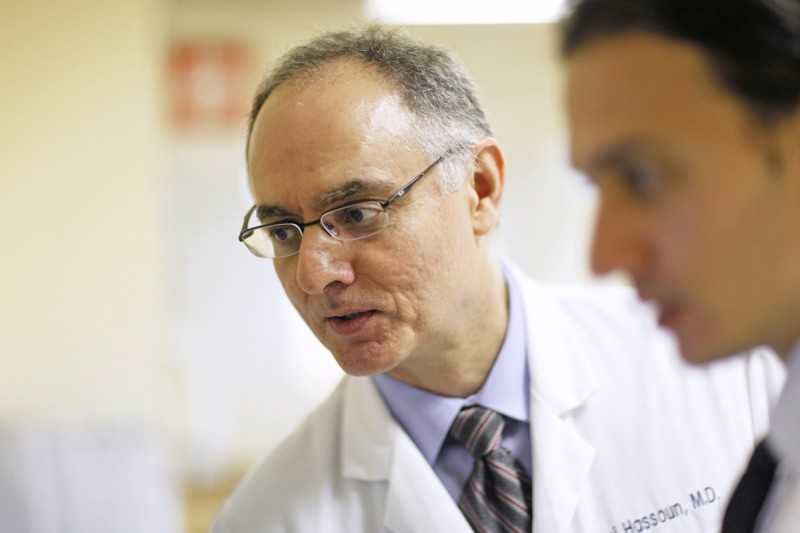
Through clinical trials, hematology-oncologist Hani Hassoun is working to improve stem cell transplantation for people newly diagnosed with multiple myeloma.
A stem cell transplant, also called a bone marrow transplant, can be an effective part of treatment for multiple myeloma. Hematopoietic stem cells reside in the bone marrow. They can produce all types of blood cells, including white blood cells, red blood cells, and platelets. In this procedure, hematopoietic stem cells are collected from the patient or another person.
Types of Transplants
There are two main types of stem cell transplants: autologous transplantation or allogeneic transplantation. In autologous transplantation, a patient’s own stem cells are collected before chemotherapy, then returned when chemotherapy is complete. In allogeneic transplantation, stem cells are given by a donor, most commonly a brother or sister. Autologous stem cell transplantation is more common for multiple myeloma, but either type of transplant can be used.
People who have autologous or allogeneic transplants first receive high-dose chemotherapy to kill the cancer cells. Two days later, the stem cells are infused into the bloodstream. This procedure is similar to a blood transfusion. Over the following days, the transplanted stem cells travel to the bone marrow, where they grow and develop into new mature blood cells, including red blood cells, white blood cells, and platelets.
It usually takes several weeks before all of the mature blood cells are replenished. During this time, special measures are taken to protect a patient from infections and bleeding. Stem cell transplantation may require up to three weeks in a hospital. Full recovery takes several months.
Successful autologous and allogeneic transplants provide the patient with new, healthy bone marrow. Allogeneic transplants also give the patient a new immune system, which is derived from the donor’s stem cells and may help protect against cancer.
Stem Cell Transplantation Results
High-dose chemotherapy combined with stem cell transplantation is a standard therapy for people with myeloma. It has been shown to extend survival. In select people who have a very good response to induction treatment, an autologous transplantation can be put off until a later time.
At Memorial Sloan Kettering, we are committed to improving the outcomes of people who undergo stem cell transplantation for the treatment of multiple myeloma. Most people who receive a stem cell transplant at MSK recover extremely well.
In fact, an independent study conducted by the US National Marrow Donor Program in 2012 showed that MSK significantly exceeded its predicted rate of one-year survival for people who had allogeneic bone marrow transplantation.
In addition, we have developed new growth factors and other medications to increase the number of stem cells that are available for collection. That increases the chances of a successful outcome after a transplant.
Investigative Approaches
MSK researchers are pursuing ways to improve the safety and effectiveness of stem cell transplantation. We are investigating whether stem cell transplantation is still necessary early on in multiple myeloma treatment, given the effectiveness of newer drugs, such as carfilzomib (Kyprolis®) and lenalidomide (Revlimid®).
See a list of current clinical trials for multiple myeloma at MSK.



